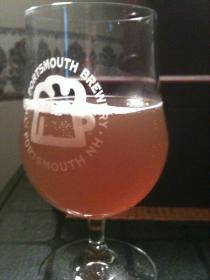Ok, so I finally made it back to California this past weekend, which meant I could pick up a bottle of the real thing for a comparison tasting:
My wife and I started with blind triangle tasting (we each poured for each other). The beers were pretty darn close -- if not for the difference in yeast character, you could have convinced me that either one was the Curieux -- but distinguishable.
In this go round, there were five key differences:
1. Finishing gravity - As mentioned before, I brewed the recipe without sugar. The Allagash:
Was dryer than my version:
2. Belgian yeast character - The Allagash had FAR more Belgian character. This is where my fermentation options get me. I have a secondhand wine fridge I use to control temperatures. Unfortunately, it's only adjustable up to 65 degrees. I'm going to need to figure out a way to go warmer to match this beer.
3. Obviousness of the bourbon - I added just 1/8th of a cup of bourbon when I went into the keg, yet the Jim Beam is obvious as the glass nears your nose. In comparison, I almost had to fight to pick up the bourbon character in the Allagash. I feel like that hasn't been the case when I've had the beer before, so maybe the past couple weeks of drinking my version have re-set my palate? Or perhaps they have some batch-to-batch variation.
4. Clarity - Once we moved on from the plastic cups to actual glasses, the visual difference between the beers was pretty obvious:
The Allagash might clear if I let it sit in the fridge long enough.
5. My version doesn't set me back $17.99 for a 750 ml bottle - And at the end of the day, that might just be the biggest difference of all










